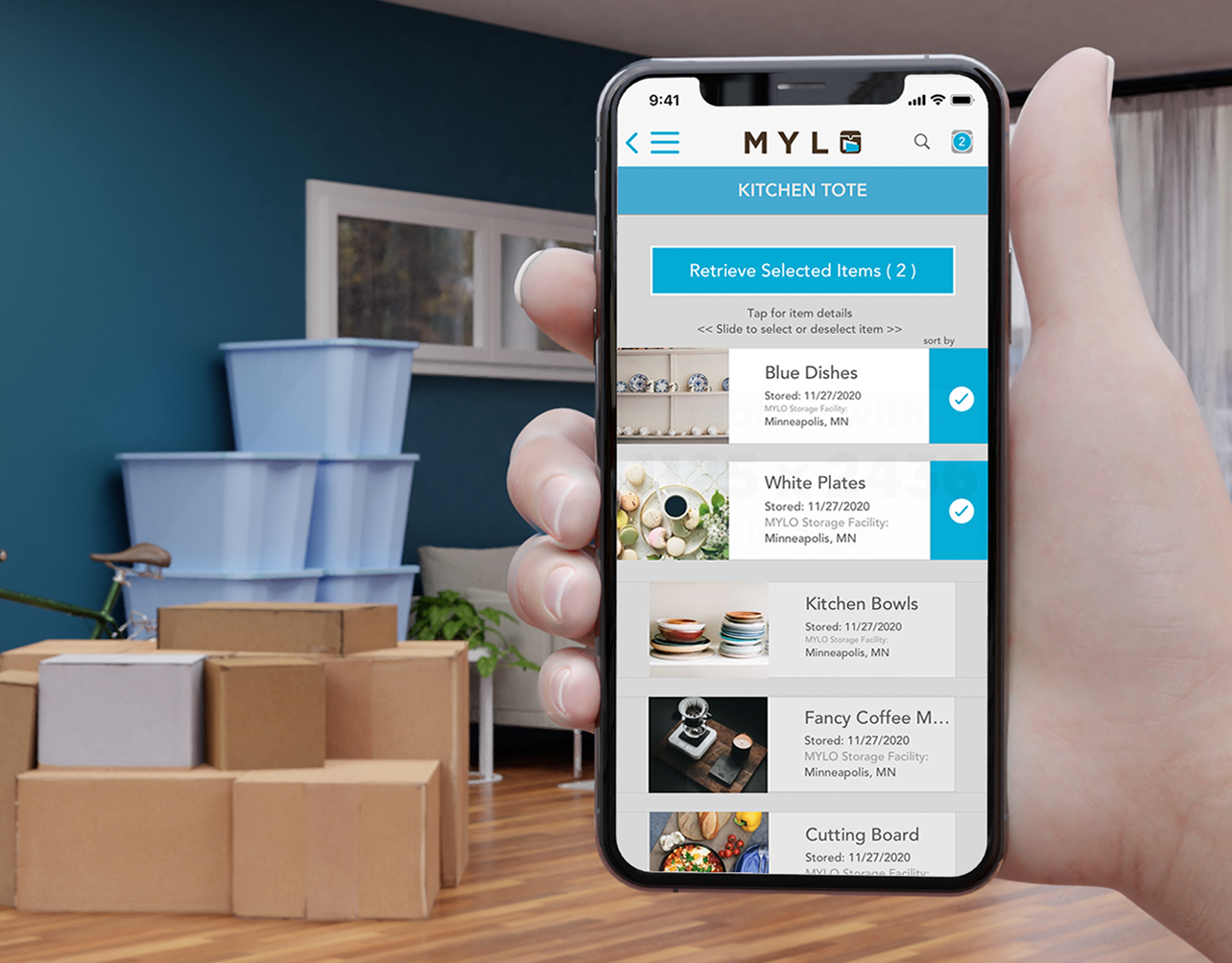Client: Titanic Time Figure Drawing Co-op and other local figure drawing cooperatives
Users: Figure Drawing Host (School, Facility, or Business), Drawing Participants, and Figure Model
Tools: Figma, Photoshop, Vectary, Daz 3d, Zoom, Social Media, Google Forms, Paypal & Venmo
Process & Methodology: Competitive Audit, Stakeholder & User Interviews, 3D Prototyping, Conducting live session, Follow-up Interviews, Synthesis of Findings into Revised Visual Schematic and Presentation
The Challenge
At the beginning of the pandemic, with hopes of slowing the spread of disease, many group activities were canceled, including live in-person figure drawing sessions. The challenge was to find a solution that enabled these groups to continue their practice in a way that supported the community.
The Solution
Create a prototype for a remote figure drawing session based on preliminary research to address users’ needs within the community. Then, hold a live remote prototype session and collect feedback from the participants. Finally, use collected data to create a ‘how-to’ visual schematic to help figure drawing cooperatives facilitate their remote sessions.
My Tasks and Roles
This project was a solo project. Initially, I performed a competitive audit and interviewed stakeholders and users. Next, using 3d software, I prototyped the physical layout of the studio space. This prototype included the stage, lights, camera, and model positioning. Rendering the scene this way allowed me to play with lighting to find a simple and dynamic solution. Midway through the project, I organized and held a live remote figure drawing session with a live model and participants. The session made sure to take precautionary measures for safe social distancing. After the session, I interviewed participants to find opportunities for improvement. To wrap up the project, I created a visual guide detailing the steps to take to conduct a remote figure drawing session successfully. Finally, I summarized project findings into a presentation and presented the project to a live remote audience with over 150 people in attendance.
Featured Solution:
Remote Figure Drawing Quick Start Guide
Linked below is an interactive guide explaining the setup for a remote figure drawing session, best viewed on a desktop. To view, hover over the frame, click on the Remote Figure Drawing title, or click the arrows in the top right corner to expand. If content does not fit on the screen, find options at the top right, select fit-to-screen, or press Z to cycle through the fit-to-screen options.

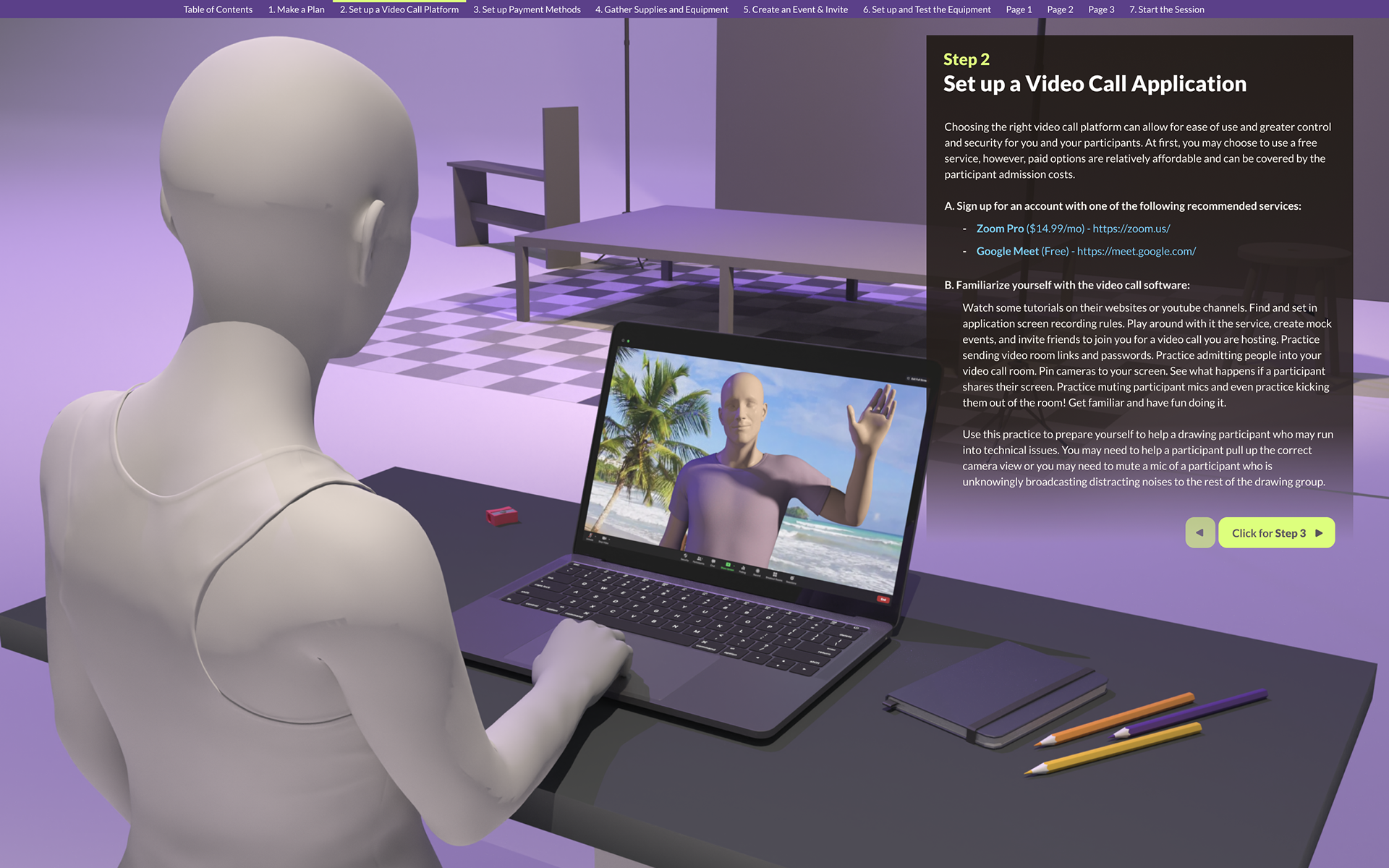
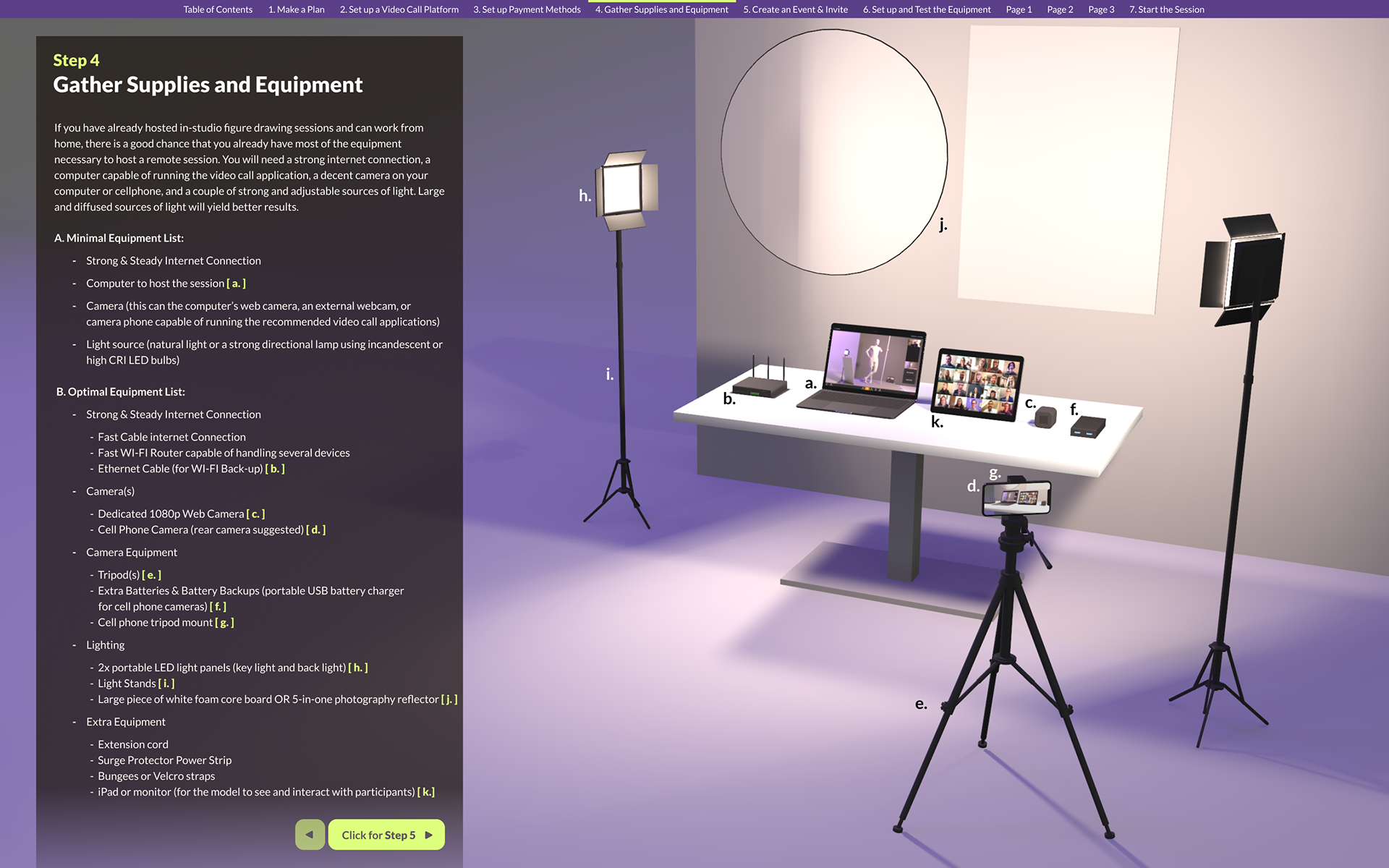
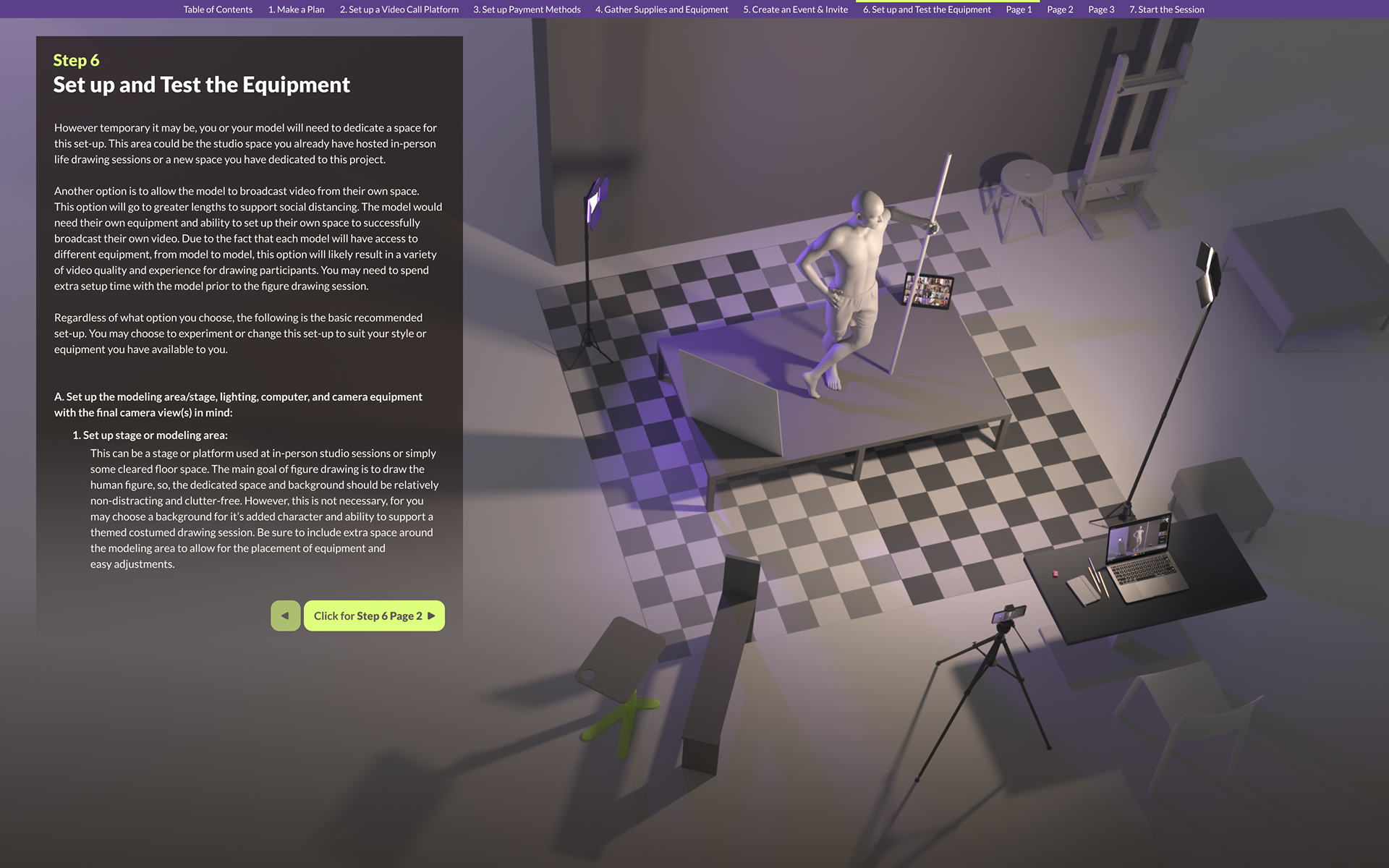

Featured pages from Remote Figure Drawing Quick Start Guide
Project Overview
At the beginning of the pandemic, with hopes of slowing the spread of disease, many community-based group activities were canceled. Unfortunately, these cancelations affected the figure drawing community, leaving participants without a source for study and income.
For my project, I designed a remote figure drawing experience that enables artists to continue their practice while providing a way for studios and models to earn income. In doing so, I supported the community by delivering knowledgeable ways to leverage existing technology to solve an issue faced by many in the space.
"everyone's lives are effected by this, but we draw and that's the good medicine."
- Local Figure Drawing Host
Initial Research & Findings
To start this project, I researched and compared data on the pandemic’s effects on established figure drawing facilitators around the country. Then, I interviewed several drawing participants, hosts, and models to understand how cancelations affected community users. Finally, I attended remote figure drawing sessions based in Los Angeles and London to understand how communities adapted.
Most in-person figure drawing facilitators had closed their doors to comply with social distancing guidelines, while a few continued to run with limited participant attendance. A tiny percentage of them offered or had offered remote online alternatives.
Users generally wanted to continue the practice and connect with their community. However, I also found concerns about the complications and limitations of technology to facilitate a similar experience to in-studio figure drawing. Furthermore, there were concerns about model privacy protecting their identity and participants’ abilities to use screen-capturing software to capture potentially sensitive content.
Prototyping the Setup
With research data in mind, I began prototyping a live remote figure drawing session plan. First, I used 3d rendering software to envision the studio space, stage, cameras, model, and lighting positioning.
Alongside this process, I compiled a list of equipment, supplies, and software needed to facilitate the live remote session. When researching software, I noted if in-app recording and privacy controls were available.

Initial Setup Prototype
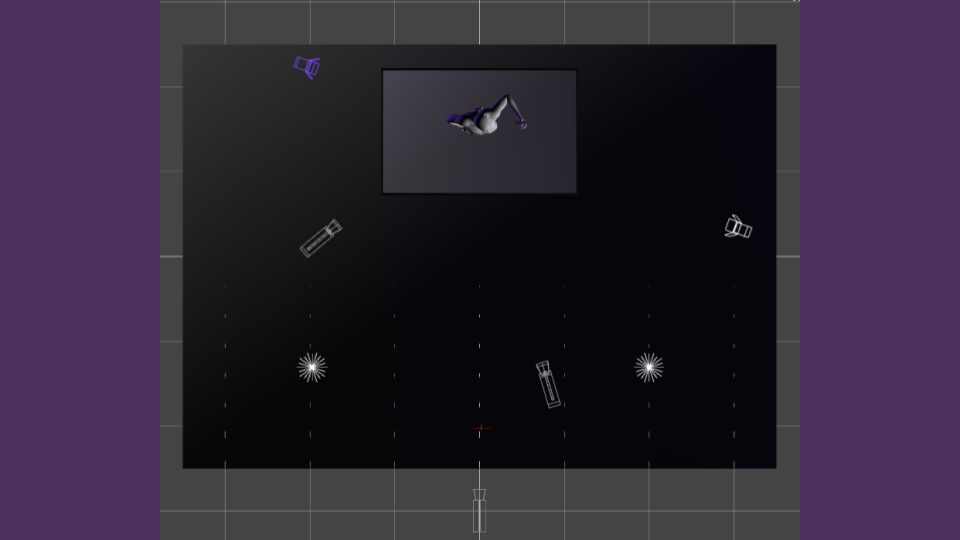
Initial Setup Prototype

Initial Setup Prototype
Live Remote Session
Next, and perhaps the most challenging part of this project, was to bring all of this together to facilitate a live 3-hour-long remote figure drawing session. Let’s look at what the remote drawing participant experienced for this session.
First, participants were made aware of the session through an established figure drawing group on social media. Then, on the event page, links were provided, allowing participants to prepay for the remote session.
After payment, the participants received a link to a form that housed a message that outlined base community guidelines and the model’s boundaries around recording and privacy. This form asked them to read the statement and provide their name and email to receive a link to the session.
The link launched the meeting, and the host greeted participants at the remote session. Next, the host facilitated a brief group conversation and check-in. Upon the start of the session, the facilitator gave the model time and space to re-address their preferences about recording, privacy and identifying information on social media posts of the artist’s artwork.
After the formalities, the drawing session began as the model took her first pose. The facilitator provided the remote participants with three different camera angles to set up their compositions. An option typically unavailable in crowded in-studio sessions.
The participants could communicate with the host and model through the studio computer speakers and mic. Participants could also interact directly and give feedback to the model as she used her tablet as a reference monitor.
During breaks, remote participants were allowed time to mingle, and at the end of the session, the host facilitated time for the participants to share their drawings and discuss their process.
Pictured right or below on mobile: A 3D rendered recreation of the participants’ three different camera view angles.
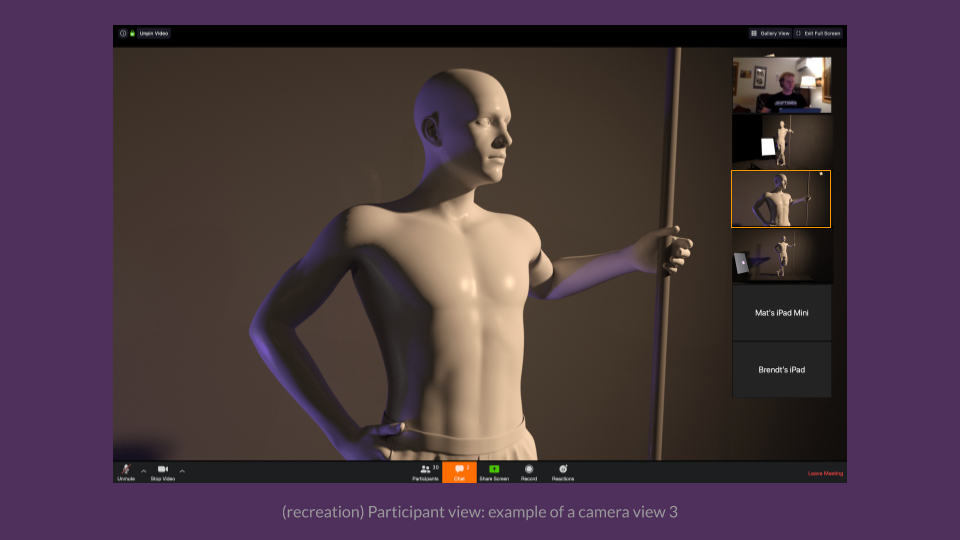

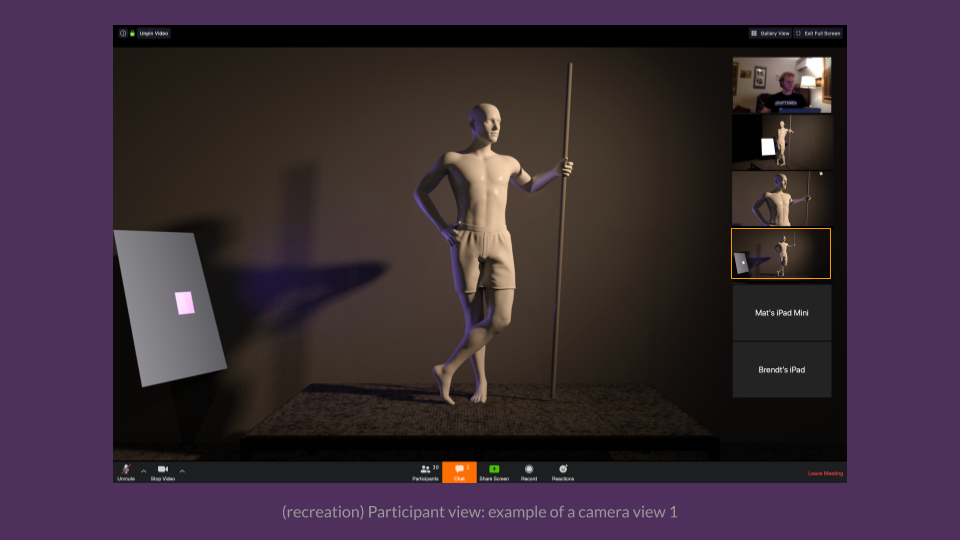

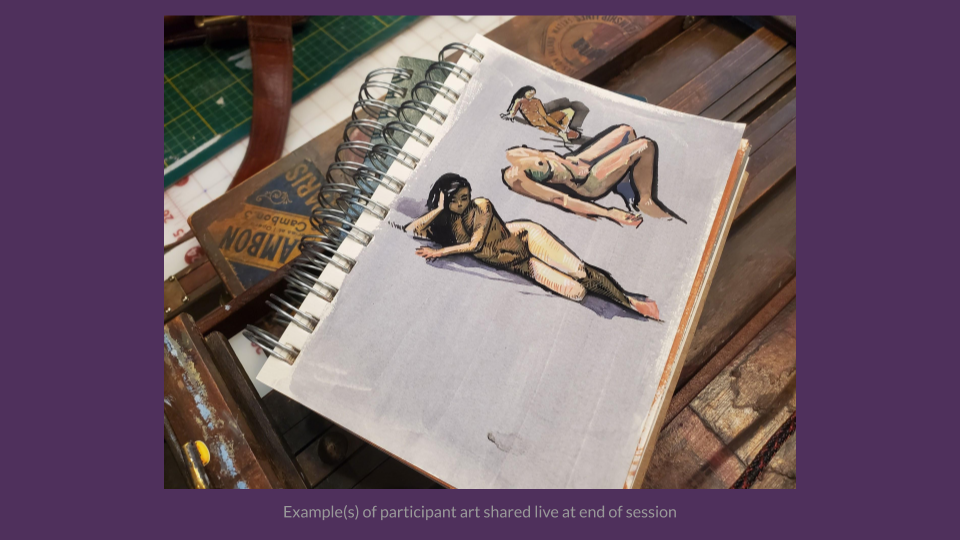

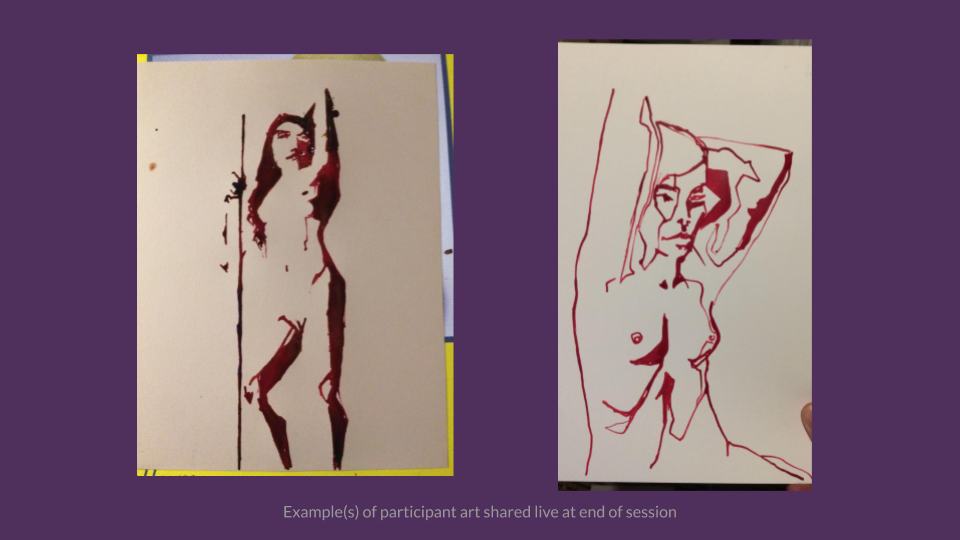
Artworks produced by participants during the live session.
Project Reflection
The remote figure drawing session went much better than I expected and provided insights for creating a better experience in the future. The remote sessions certainly took more time and prep work to set up and facilitate. Interviews with participants after the session revealed that the experience felt similar to in-studio but that remote sessions have drawbacks. Participants stated that the streaming video distorted the model and lacked the detailed resolution needed for a faithful representation of the human figure. Some participants noted that the remote session lacked the nuanced, in-person experience of translating three-dimensional forms into two-dimensional shapes on a canvas. In addition, the model reported that the remote session was a comfortable experience but might be unnerved by an unfamiliar group of artists. She said it was nice to see participants and her poses on her tablet used as a live-view reference monitor. However, finding poses that worked for each camera angle was a challenge. The participants, studio owner, and model said they would readily participate again.
To follow up on this project, I will deliver my how-to guide to local co-figure drawing co-ops and, later, check in with them to see how things are going. In addition, I want to know who made suggested digital adaptations versus those who decided to take other avenues and why. I also look forward to following up with a facilitator who has already started working with lawyers to create documents for models that help protect their privacy and image rights. Finally, as we adapt, develop new technology, and find new ways to work remotely, it will be beneficial to find ways to address the shortcomings of streaming video for a figure session.





